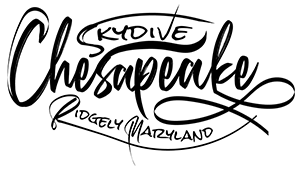Learn to Skydive
Start Your Adventure in Skydiving Today!
You’ll begin your solo skydiving education with a classroom-based First Jump Course. This classroom time lasts about 6-8 hours of thorough on-the-ground training and a written test. During “skydiving school,” you will learn and practice to perfection everything you need to know to confidently and safely make your first skydive with instructors. You will be guided through the remainder of our Accelerated Free Fall Progression with attentive instruction and practical evaluations.
Applicability
Must be at least 18 years of age and present a valid photo Id
The maximum weight limit is 220 lbs
Get More Info and Register for an Upcoming Course
For more information about our AFFP program and learning to skydive in general, please read through our learn to skydive FAQs. If you have additional questions, please contact a member of our team for assistance!
We offer our AFFP First Jump Course on a regular basis. Click register online for an upcoming course.
“A”
Skydiving License
The skydiving A license is the first license a new skydiver achieves. It is proof that the skydiver has completed their training and is now cleared to jump without supervision.
Achieving an A license is really exciting! To get to this point, the skydiver will have completed all of their basic training and will have learned all about their equipment, how to exit the aircraft, how to fly their bodies in freefall, how to control their parachute during the descent and landing, and what to do in the event things don’t go to plan.
What is required to get a skydiving A License? According to the USPA, a skydiver must:
-
Complete the Accelerated Free Fall Progression
-
Complete a minimum of 25 jumps
-
Complete all requirements laid out by the USPA A License Proficiency Card
-
Make five skydives with one or more other people
-
Have their skydiving license stamped by a USPA dropzone
-
Pass the USPA written and oral exams
“B”
Skydiving License
The next level of skydiving license is the skydiving B license. This level is achieved by skydivers who have completed a minimum of 50 skydives. B license skydivers have proven a basic level of experience in jumping unsupervised and with others.
While the A license gives you the freedom to jump unsupervised, the B license shows that you have been able to do so for at least 25 jumps, including planned jumps with groups. According to the USPA, a B license skydiver has:
-
Achieved the skydiving A license
-
Made 50 skydives during which they have been in freefall for at least 30 minutes and have landed within 33 feet of a target on ten jumps
-
Demonstrated the ability to perform controlled turning and backlooping maneuvers, or successfully completed the planned points in ten group formation skydives
-
Documented proof of live water landing training
-
Proven their canopy piloting skills by fulfilling the requirements of the USPA canopy piloting proficiency card
-
Passed a written USPA exam
A B license skydiver is also eligible to become a USPA skydiving coach, once they have completed 100 jumps.
“C”
Skydiving License
A skydiving C license is a step higher than the B license. A C license holder can do all of the things listed under A and B and is also eligible to get their USPA instructor rating (though not the Tandem rating).
They can also be a passenger on a USPA tandem instructor training course and rating renewal jumps and can participate in certain more advanced level jumps. To do this, a skydiver must:
-
Have achieved a B license
-
Have completed 200 jumps and been in freefall for at least 60 minutes
-
Have landed within 7 feet of a target on 25 jumps
-
Have completed in air turning and barrel rolling maneuvers, or completed at least two points on an 8 person formation skydive
-
Have passed a written exam
“D”
Skydiving License
The skydiving D license is the top license you can achieve. Skydivers holding a D license have proven a wide range of skills and have a great depth of experience, having completed a minimum of 500 jumps.
D license skydivers have all of the privileges of A, B and C license and are eligible for all USPA instructor ratings. To achieve this, a skydiver must:
-
Have a C license
-
Have made 500 jumps including 3 hours of freefall time
-
Have made two night jumps with freefall of at least 20 seconds in duration
-
Have passed the written USPA D license exam
Stage 1: Ground Training
The first jump course takes place at our training center at Skydive Chesapeake. This course typically takes 4-6 hours to complete and covers all theoretical and practical training necessary to prepare you for your first solo skydive, including skydiving equipment, aircraft procedures, exit procedures, freefall, deployment, canopy control, and dealing with emergencies.
Stage 2: Freefall and Canopy Training
Once you have met all the prerequisites, you are ready to make your first solo skydive. At first, your instructor will hold onto you in the air, but you will quickly progress to independent flight. By jump number 4 you will exit the airplane on your own and work on more advanced skills. These skills consist of heading control, turns, instability recovery, flips, relative work, advanced exits, docking, and tracking.
Throughout the program, you will also learn about equipment, parachute packing, aircraft spotting, winds and weather conditions, canopy flight and all the technical aspects you need to know to skydive.

